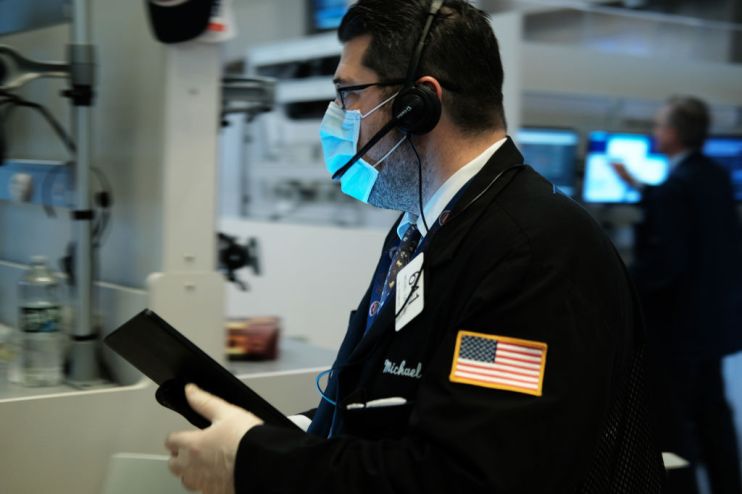US stocks drop despite massive coronavirus stimulus from Federal Reserve

US stocks have fallen once again despite the Federal Reserve unveiling another huge package of measures to try to boost the economy throughout the coronavirus pandemic.
Wall Street’s S&P 500 was down 1.1 per cent in early trading, the Dow Jones was 1.3 per cent lower but the Nasdaq index had gained 0.2 per cent.
US stocks have now fallen more than 30 per cent from recent highs in one of the worst market corrections in history.
The market crash has been driven by huge uncertainty about the extent of the economic damage from coronavirus.
Massive central bank action has failed to stem the flow out of equities. This trend repeated itself today when the Fed said it would buy an unlimited amount of bonds to try to boost markets but investors sold shares nonetheless.
The failure of the US’s executive and legislative branches to agree on a more than $1 trillion stimulus package has also dragged markets lower.
Democrats have rejected proposals by the administration of US President Donald Trump, saying they do not include enough oversight, support for workers or help for hospitals.
Anna Stupnytska, global head of macro at Fidelity International, said investors want the Fed’s efforts “to be matched by much bigger and timely packages on the fiscal side, which in turn have to be effective in helping the economy”.
She said a “V-shaped” rebound for the US economy was unlikely given coronavirus’s effect on growth.
“For the US economy to be able to come out of the current crisis and the ongoing recession relatively unscathed, more radical policy interventions will be needed in the next few weeks.”
Fears of a deep recession in Europe, which is now the epicentre of the virus, led to further stock market falls in the UK and on the continent.
The FTSE 100 was down 3.4 per cent in afternoon trading, the pan-European Stoxx 600 was down 3.2 per cent, and Germany’s Dax was 1.7 per cent lower.
Yields on US government bonds fell sharply following the Fed’s announcement. The 10-year Treasury yield, which moves inversely to the bond’s price, was 0.15 percentage points lower by early afternoon at 0.715 per cent.